The Environmental Art of Helen Mayer Harrison and Newton Harrison
This blog post aims to introduce or reintroduce readers (whichever the case may be) to the groundbreaking work of Helen Mayer Harrison and Newton Harrison, highlighting their contributions to environmental art and their influence on contemporary discourse around art and ecology
Chris Sitton
6/15/20243 min read
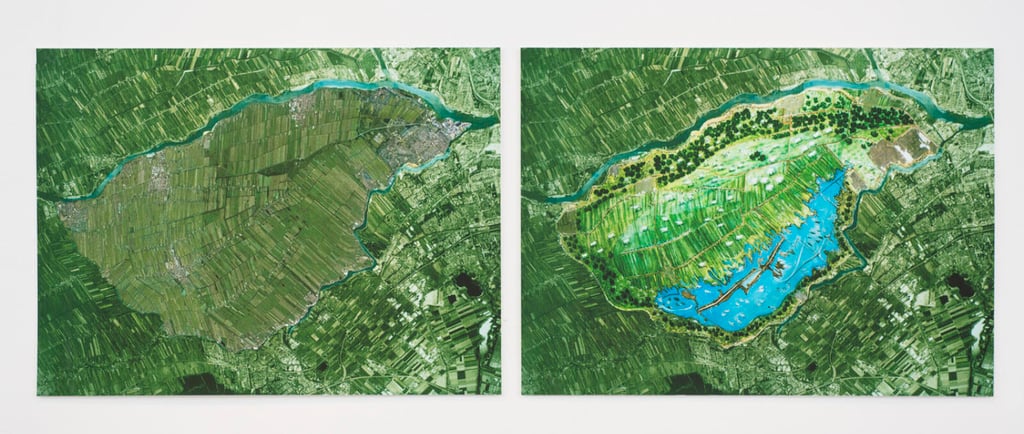

Art has the power to provoke thought, inspire change, and challenge perceptions. Few artists embody this transformative potential as profoundly as Helen Mayer Harrison and Newton Harrison, a collaborative duo whose pioneering work in environmental art has left an indelible mark on both the art world and environmental discourse.
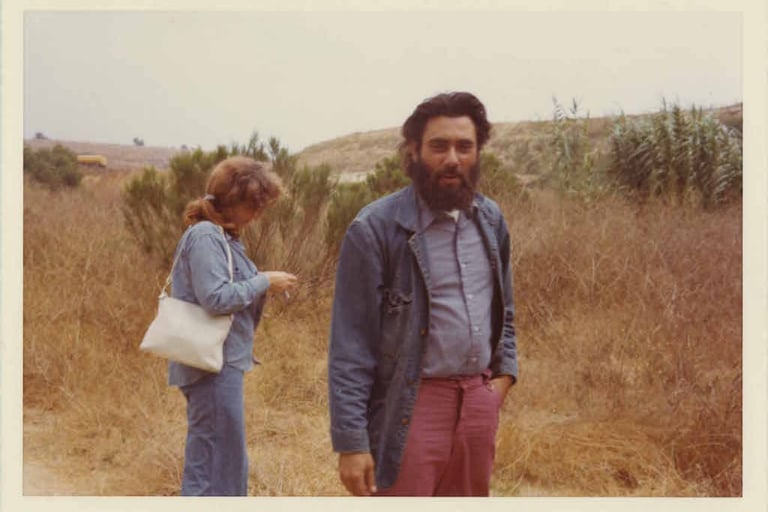

Helen Mayer Harrison (1929–2018) and Newton Harrison (1932-2022), husband and wife began their artistic collaborative practice in the late 1960s. Their work emerged during a time of increasing awareness and concern about environmental issues. They used art as a catalyst for ecological stewardship and sustainability. According to the Harrison Studio website, they were "among the earliest and best known social and environmental artists."
Early Life and Collaboration
Art as a Tool for Environmental Change
The Harrisons viewed art not as just a means of expression, but as a tool for fostering environmental awareness and action. Their projects often consisted of large-scale installations, multimedia presentations, and community-based collaborations that focused on addressing serious ecological challenges such as climate change, deforestation, and habitat loss.
Conceptual Framework: "The Force Majeure"
Projects and Impact
Central to the Harrisons' artistic philosophy was the concept of "The Force Majeure," which they defined as the cumulative impact of human activity on the planet. Their work explored how human interventions—such as agriculture, urbanization, and resource extraction—have disrupted natural systems and endangered biodiversity.
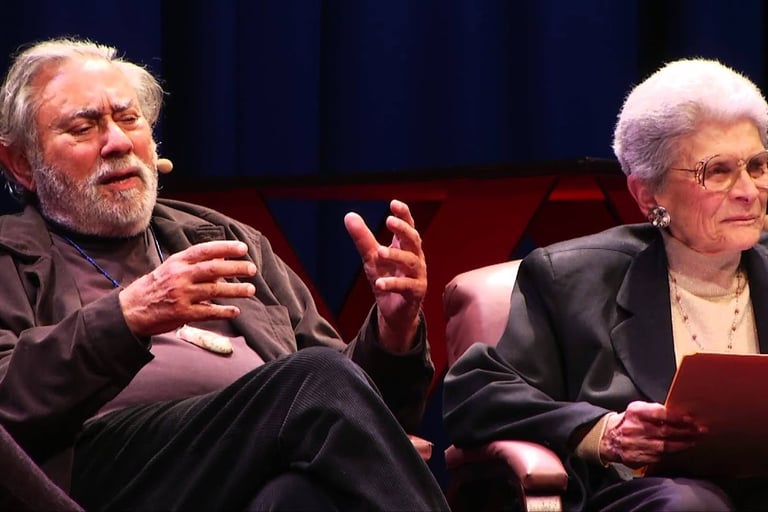

Legacy and Influence
One of their seminal projects, "Survival Piece IV: The Lagoon Cycle" (1971-1984), exemplifies their work. This ongoing project focused on restoring the Laguna de Santa Rosa watershed in California, integrating scientific research, community engagement, and artistic interventions to revitalize the ecosystem and raise awareness about environmental issues.
Another significant project, "Greenhouse Britain: Losing Ground, Gaining Wisdom" (2007), imagined the impacts of climate change on the United Kingdom and proposed innovative solutions for adapting to rising sea levels and changing agricultural practices.
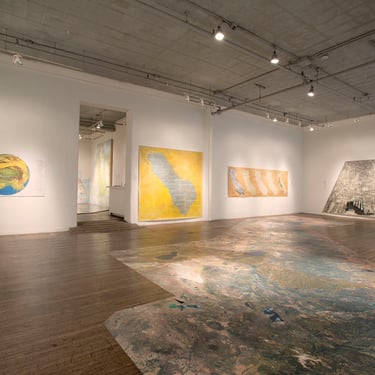
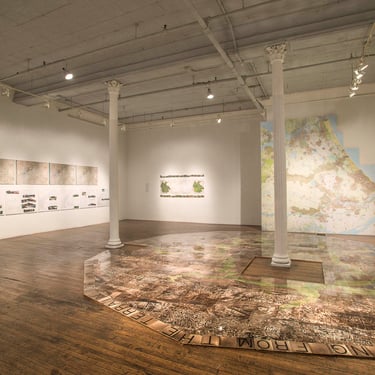
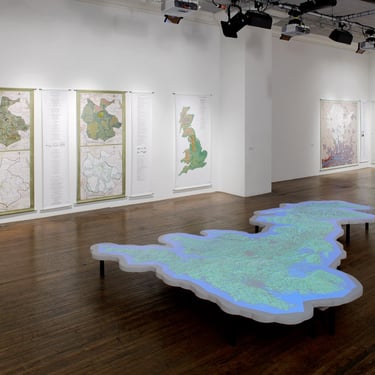
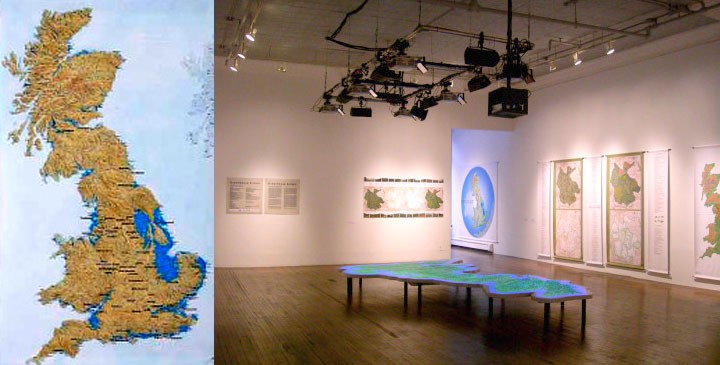

The Harrison's legacy extends beyond their extensive artistic achievements. They helped pioneer the field of eco-art, influencing subsequent generations of artists, activists, and scholars to explore the intersection of art, ecology, and sustainability. Their interdisciplinary approach, combining art, science, and community engagement, continues to inspire new approaches to addressing environmental challenges worldwide.
Recognition and Awards
Throughout their careers, the Harrisons received numerous awards and honors for their contributions to art and environmental activism. Their work has been exhibited internationally and is held in prestigious collections, underscoring its enduring relevance and impact.
In Conclusion
Helen Mayer Harrison and Newton Harrison's collaborative practice transcended traditional boundaries of art, blending aesthetic expression with scientific inquiry and environmental advocacy. Their visionary approach continues to resonate in a time now defined by urgent environmental concerns, demonstrating the profound potential of art to provoke dialogue, inspire action, and envision sustainable futures.
Their remarkable careers show us the transformative power of art to address the critical challenges facing our planet today. And the Harrisons' legacy serves as a testament to the enduring role of artists as agents of change and champions of environmental stewardship.
Sources for Further Reading
This post just scratches the surface on the contributions of the Harrisons. These sources will provide a more comprehensive overview of Helen Mayer Harrison and Newton Harrison's artistic practice, their philosophical concepts, and their impact on the field of environmental art.
Books and Publications:
"The Time of the Force Majeure: After 45 Years Counterforce is on the Horizon" by Helen Mayer Harrison and Newton Harrison
"Making a Difference: 20th Century Women Artists" edited by Claudia Zanfi
Websites:
The Harrisons Studio: theharrisonstudio.net
Ted Talk: A Counterforce on the Horizon | Helen Mayer & Newton Harrison | TEDxSantaCruz
https://www.youtube.com/watch?v=a6UVZFQvhWc
Artists on Art Present Newton & Helen Mayer Harrison
https://www.youtube.com/watch?v=O-39vHzVR60
Online Exhibitions and Catalogs: Various exhibition catalogs from museums and galleries where the Harrisons' work has been featured.
Documentaries or interviews featuring the Harrisons discussing their artistic process and environmental activism: Documentation from specific projects like "Survival Piece IV: The Lagoon Cycle" and "Greenhouse Britain: Losing Ground, Gaining Wisdom".
Stanford University, online Stanford Libraries website:
https://exhibits.stanford.edu/harrison/browse
Academic Articles:Articles from academic journals focusing on environmental art, ecological aesthetics, and eco-criticism.
University of California Press: ucpress.edu
Contact Chris
Connect
Sign Up for Email List
406-285-1136 ~ Message
© 2025 C Sitton All Rights Reserved